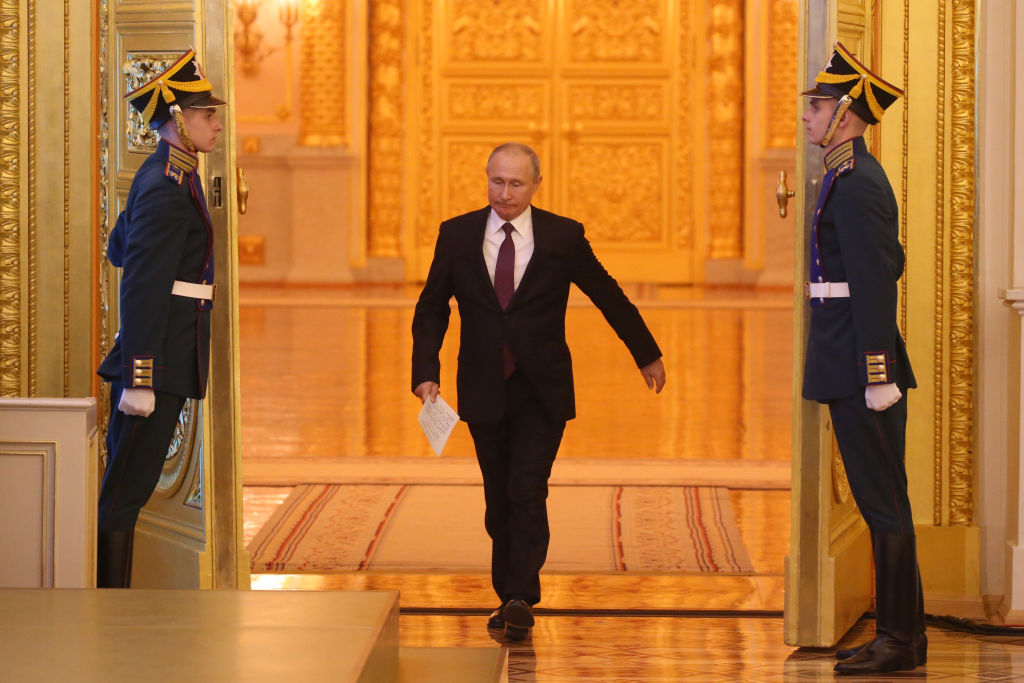
The Kremlin is on a roll. Under President Vladimir Putin, Russia has replaced the United States in Syria, continues to intervene in Eastern Ukraine, and recently hosted an African summit in Sochi. Appearances, however, can be deceiving. True, Russia retains a vast nuclear arsenal, equal in size to that of the US, and it used force effectively against Georgia in 2008 and Ukraine in 2014, provided military assistance to save Bashar al-Assad’s regime in Syria, and has used cyber means to disrupt US and other elections. But Russia can only be an international spoiler. Behind the adventurism, it is a country in decline.
In 1959, the Soviet leader Nikita Khrushchev famously boasted that the Soviet Union would overtake the US by 1970 or 1980. Instead, in 1991, the Soviet Union collapsed, leaving a significantly shrunken Russia, with three-quarters of the USSR’s territory, half its population, half its economy and one-third of its military personnel. Its GDP is only US$1.7 trillion, compared with US$21 trillion for the United States. In 1989, the Soviet economy was twice the size of China’s; today, Russia’s GDP is one-seventh that of China. Moreover, Russia is heavily dependent on energy exports; high-tech products account for only 11% of its manufactured exports (compared with 19% for the US).
While language, history and labour migration provide Russia with some soft power in its near-abroad, few foreigners elsewhere watch Russian films, and Russian universities aren’t ranked among the global top 100. The political institutions for an effective market economy are largely missing, and robber-baron state capitalism lacks the kind of effective regulation that creates trust. The public health system is weak, and average Russian life expectancy, at 72 (male and female), is five years shorter than in Europe. United Nations demographers project that Russia’s population may decline from 145 million today to 121 million by mid-century.
Many futures are possible, but at this point, Russia is a ‘one-crop economy’ with corrupt institutions and serious demographic and health problems. Former President Dmitri Medvedev laid out plans to surmount them, but little was implemented and pervasive corruption has made modernisation difficult. While Putin has been a successful tactician in restoring Russia’s presence on the world stage, he has not been a skilful strategist in addressing the country’s long-term problems.
One of Putin’s successful tactical manoeuvres has been an alignment with China. After incurring Western sanctions for his attack on Ukraine, Putin declared China ‘our key strategic partner’. In return, President Xi Jinping declared Putin ‘my best friend and colleague’.
Traditional balance-of-power politics would predict such a response to US power. In the 1950s, China and the Soviet Union were allied against the US. After Nixon’s opening to China in 1972, the US and China cooperated to limit Soviet power. That alignment ended with the collapse of the Soviet Union. In 1992, Russia and China declared their relations a ‘constructive partnership’. That became a ‘strategic partnership’ in 1996, and in July 2001 they signed a treaty of ‘friendship and cooperation’. They have cooperated closely in the UN Security Council, taken similar positions on international control of the internet, and used various diplomatic frameworks such as the BRICS grouping and the Shanghai Cooperation Organisation to coordinate positions. They now share non-nuclear military technology and conduct serous joint exercises.
Nonetheless, there are serious obstacles to a close Sino-Russian alliance that goes much beyond tactical coordination. Residual mistrust persists. In the 19th century, no country took more land from China than Russia did, and the current demographic situation in the Far East—where Russians number 6 million, and the population on the Chinese side of the border is up to 120 million—is a source of anxiety in Moscow.
Russia’s economic decline has increased its concern about the rise of China. While trade has increased, investment lags, and Russia ranks only 10th among China’s export markets. As The Economist recently reported, Russia worries about becoming the alliance’s junior partner—more dependent on China than China is on Russia. According to Feng Yujun of Fudan University, ‘The most important relationship for us is the one with America. We don’t want to repeat the mistakes of Stalin and Mao.’
America, however, must not take comfort in the decline of Russia and treat it like a second-rate power. After all, declining powers tend to be less risk-averse, as was true of Austria–Hungary in 1914. They have less to lose than rising powers. Russia still poses a potential threat to the US, largely because it’s the one country with enough missiles and nuclear warheads to destroy it. And Russia’s relative decline has made it more reluctant to renounce its nuclear status.
Even a declining Russia possesses enormous scale, an educated population, skilled scientists and engineers, and vast natural resources. It seems unlikely that Russia will again possess the resources to balance US power in the same way that the Soviet Union did during the four decades after World War II. But, because of its residual nuclear strength, its oil and gas, its skills in cyber technology, its proximity to Europe and the potential of its alliance with China, Russia will have the ability to cause problems for the US, and Putin’s reliance on populist nationalism provides an incentive. Declining powers merit as much diplomatic attention as rising ones do. At some point after President Donald Trump leaves office, the US will need to develop the serious Russia strategy that it now lacks.

